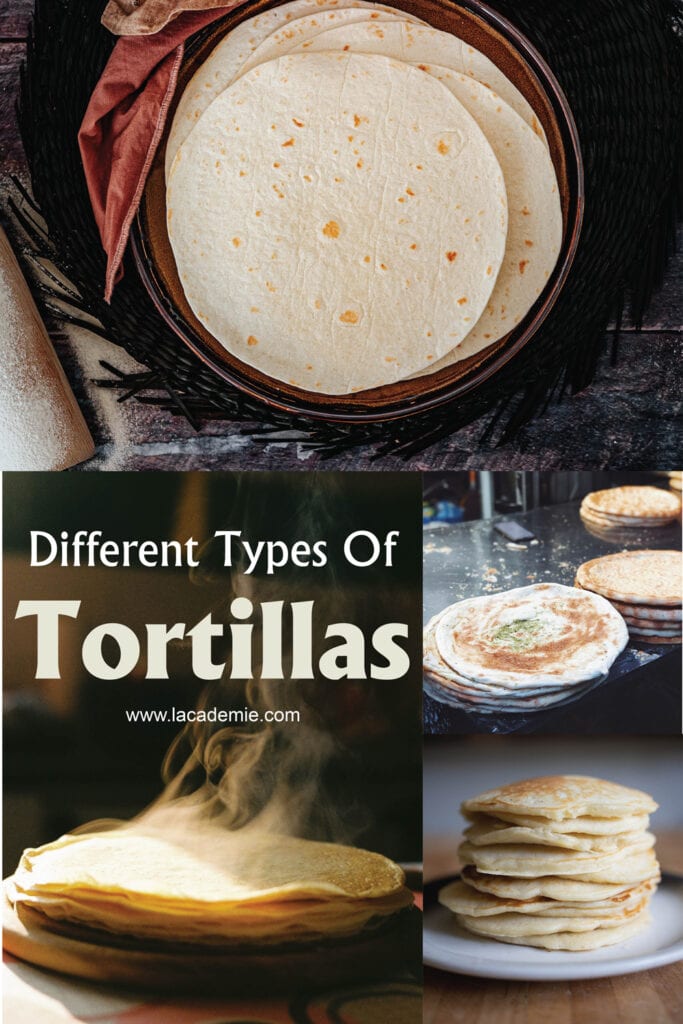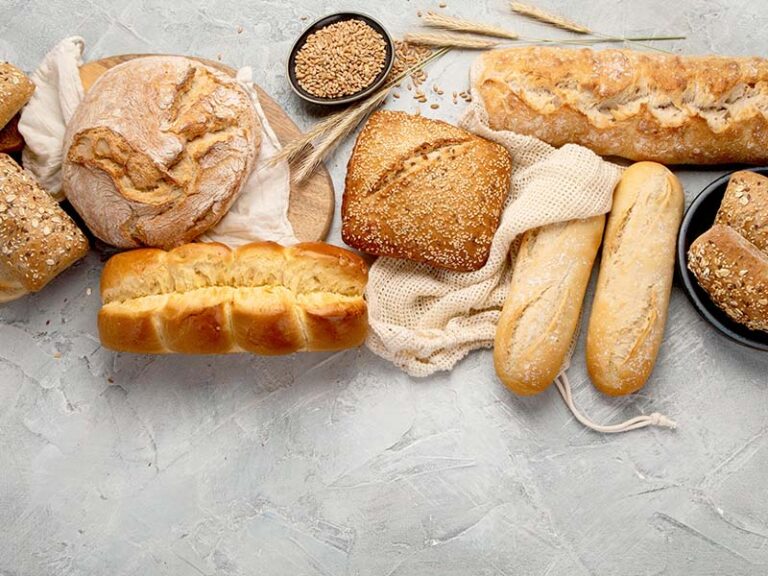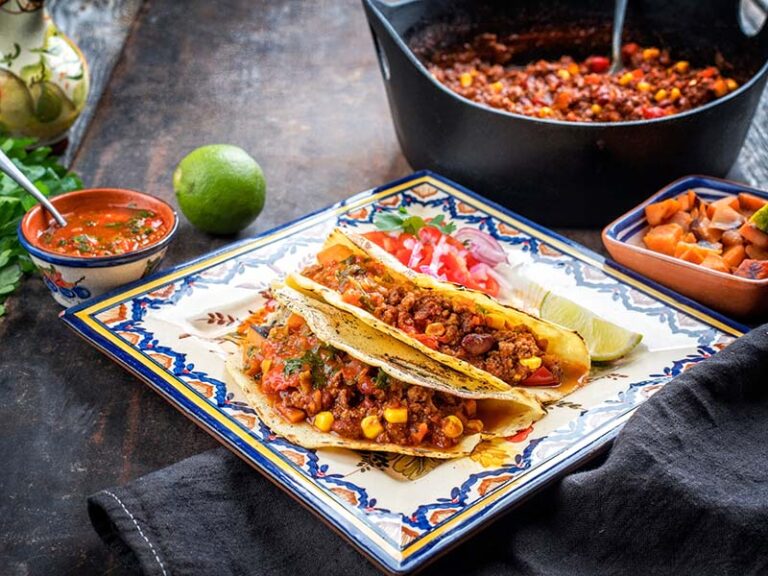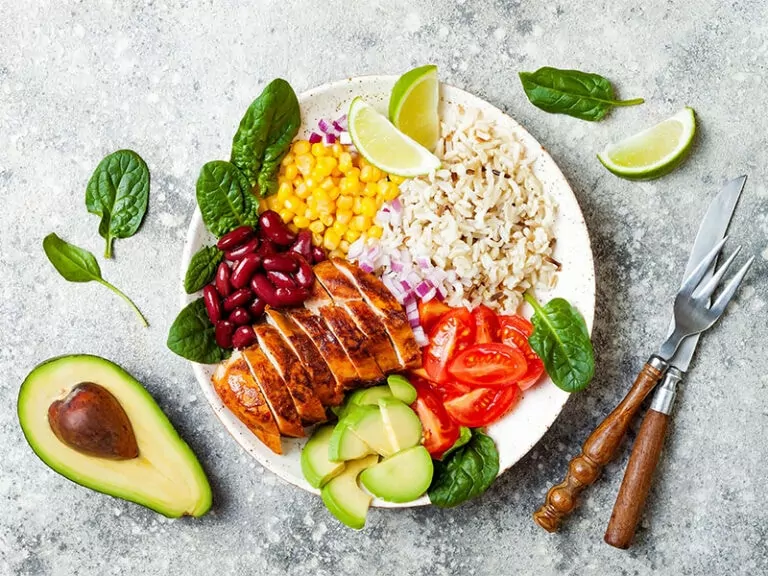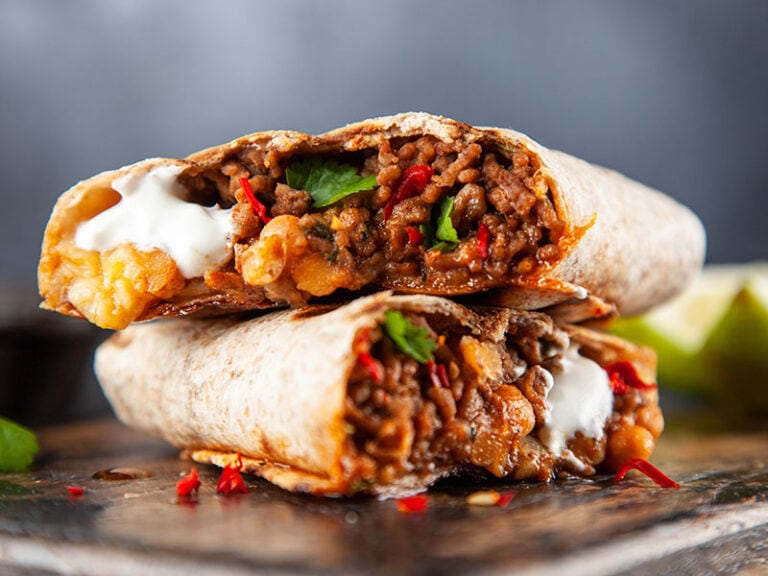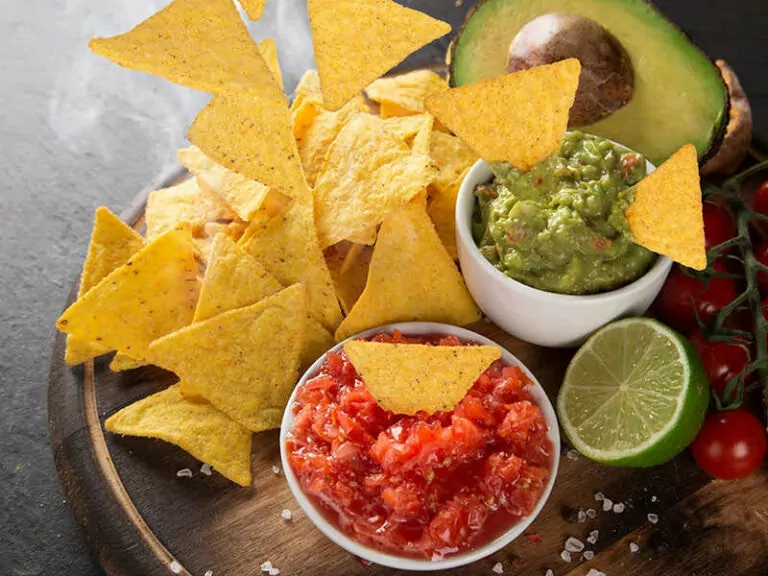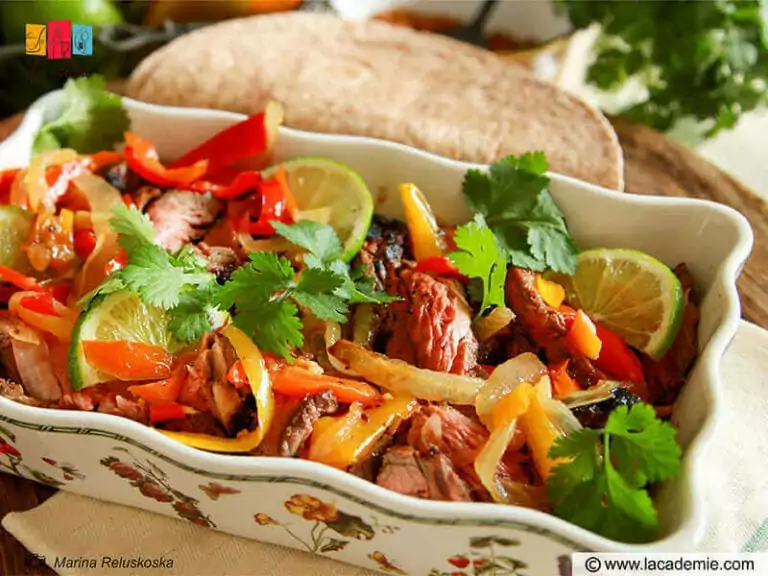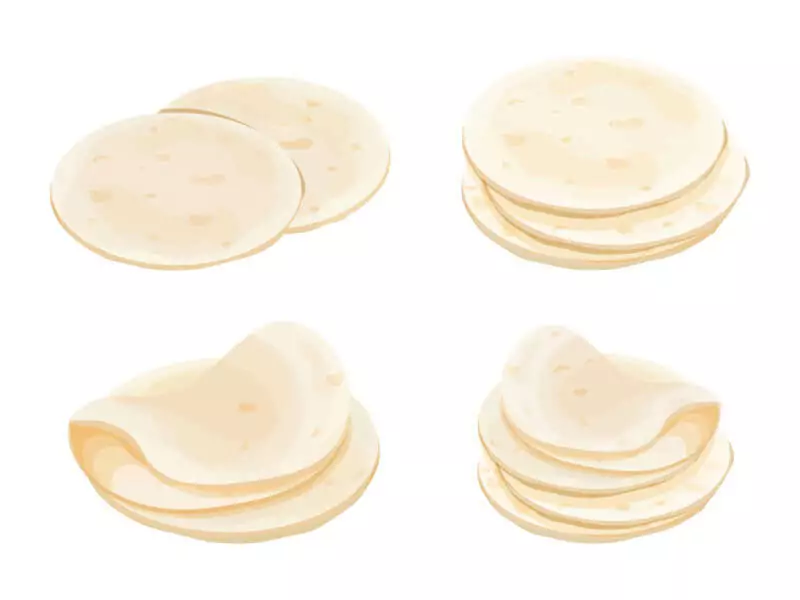
Is it important to understand different types of Tortillas? If you want to enjoy this fabulous flatbread to the fullest, the answer is yes. The reason lies in the fact that each type of Tortilla comes with its unique appearance, flavor, and, sometimes, ways of cooking.
After all, Tortilla is an interesting object. While its name is Spanish, it is originally a Native American staple food. And the flatbread isn’t an exclusively Mexican delicacy, despite what you might hear. Scroll down to learn other interesting facts about Tortilla.
General Information About Tortillas
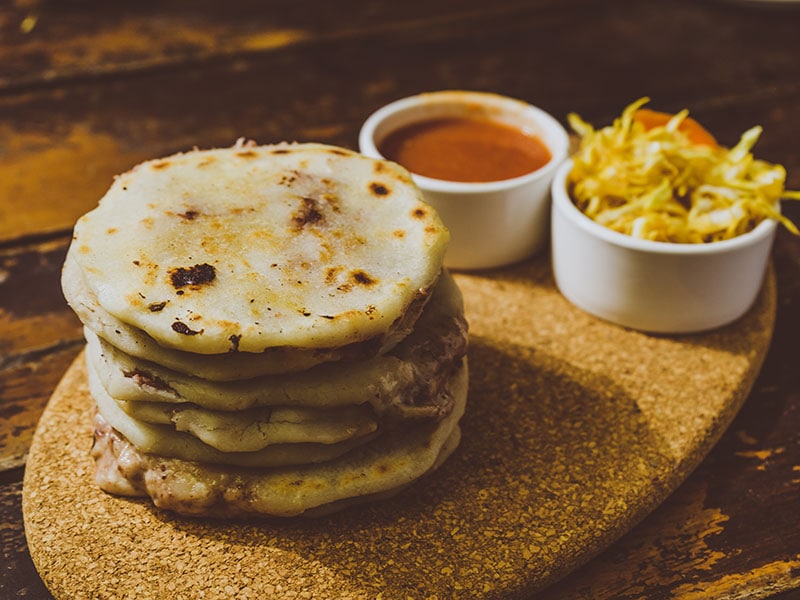
Before diving into the diverse world of Tortillas, here is what you should know about this amazing food.
What Is A Tortilla?
Tortilla is a thin, unleavened flatbread extremely popular in Latin America. The original version uses dried, alkali-treated corn kernels (hominy). Meanwhile, a more modern version has finely ground flour as the main ingredient to create a specific style of dough to make tortillas.
People cook the flatbread by grinding and kneading hominy into a smooth dough that they flatten into thin circles with a rolling pin. Those patties will be later cooked on a comal (a traditional Latin American girdle).
As you read on, you will see that there are several types of Tortillas. However, the corn-based variety is the dominant one. Therefore, when someone says “Tortilla” without mentioning explicitly the main ingredient, chances are that they are referring to the corn Tortilla.
Where Do People Eat Tortillas?
Most people automatically think of Tortilla as a Mexican specialty. This Latin American country has the longest history with Tortillas, which dates back to pre-Columbian times. Americans of Mexican descent also help popularize this staple dish in the United States.
However, Tortillas are equally common in many parts of Latin America as well, especially in Central American countries. In El Salvador, Nicaragua, and elsewhere, people eat it daily and even possess their own Tortilla recipes.
Here is what a Mexican has to tell you about the significance of Tortillas.
The History Of Tortillas
Corn Tortilla was invented nearly 12,000 years ago, not long after Native Americans discovered farming. Before contact with the Europeans, corn was the most important crop in the New World. So making flatbreads from corn kernels was a logical development.
Legend has it that a Mayan farmer created the first corn Tortilla as a gift to his emperor. I’m not sure how much truth the story contains, but it is clear that Tortilla was an integral part of both Mayan and Aztec diets.
When Spanish conquistadors arrived in the region, one of the things that captured their imagination was the strange corn-based bread that the natives ate. They later called it “Tortilla”, a Spanish word meaning “little cake”.
When wheat was introduced to the New World, people came up with flour Tortillas. Today, both corn- and flour-based varieties exist side by side, playing an irreplaceable role in the regional cuisine.
The Most Popular Types Of Tortillas To Know About
Generally, there are only two types of Tortillas: corn-based and flour-based varieties. However, the categorization doesn’t stop right there. Let’s scroll down for more information!
1. White Corn Tortilla
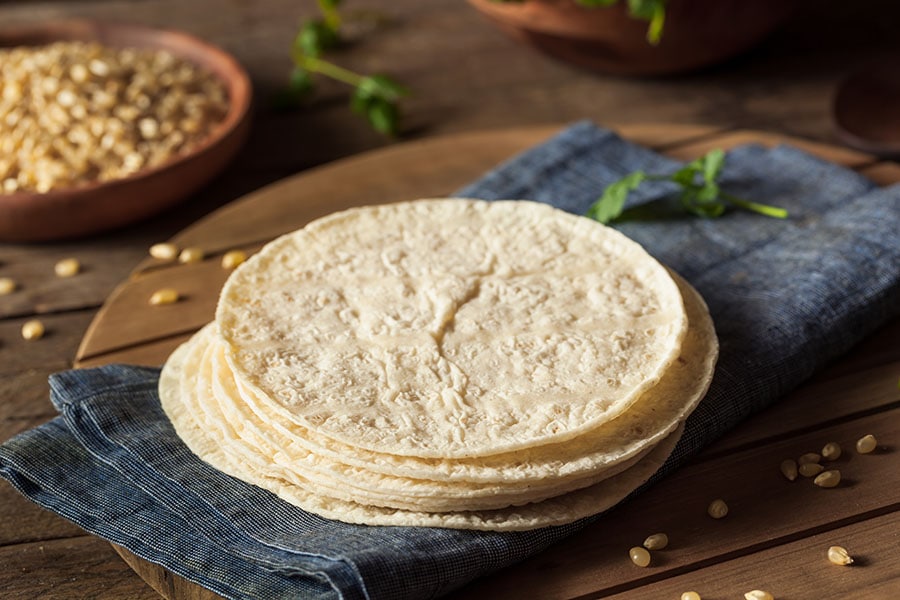
This is a classic and hugely popular version of corn Tortilla. It has a circular shape of between 10 and 20 centimeters in diameter. The milky white color is derived from the white corn cultivar that people prepare this dish with.
What is special about white corn Tortillas is their relatively higher amount of moisture. Therefore, they are thicker, softer, and easier to bend or shape. This type of Tortilla is perfect for dishes that require rolling or wrapping the Tortillas around other foods.
White corn Tortillas are one of the most popular side dishes in Mexico. They can function in place of bread as a healthier starchy food. But the flatbread also appears in multiple mouth-watering delights.
The list includes enchiladas, flautas, or quesadillas. They are all heavenly dishes that involve wrapping and folding Tortillas around a savory filling.
What you experience when biting off a piece of white corn Tortilla is natural grassy sweetness. The mild yet lingering aftertaste mingles with the nutty aroma of roasted corn to form a sublime combo.
See how Mexicans make white corn Tortillas from start to finish here.
2. Yellow Corn Tortilla
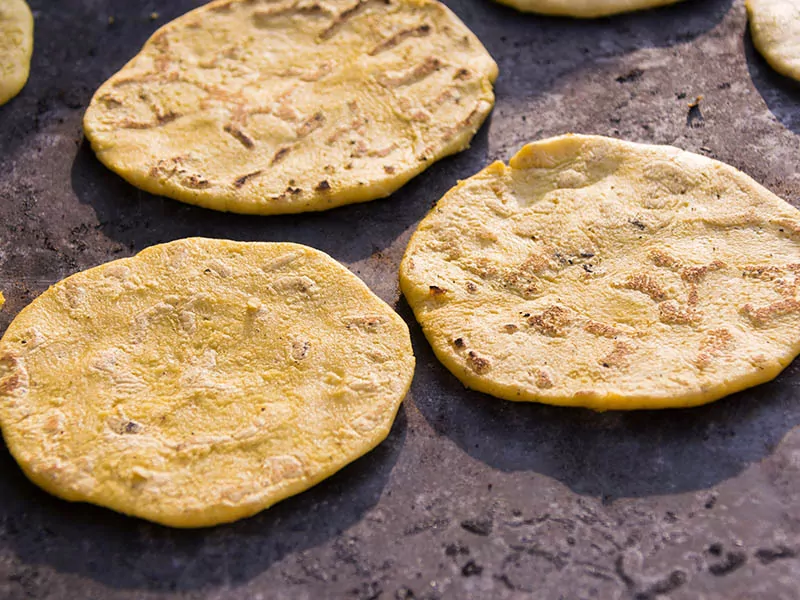
Can you guess what the main ingredient of yellow corn Tortillas is? That’s right, they are prepared from fresh local yellow corn. This type of flatbread is neck and neck with the white corn competitor in terms of popularity and versatility.
There is one key difference between the two: moisture content. Yellow corn Tortillas are thinner, coarser, and drier. As a result, they are less pliable and more prone to cracking in comparison to the variety mentioned above.
Yellow corn Tortillas should go into dishes that don’t need to manipulate the Tortillas much. For example, Tortilla chips of the highest quality are usually made from deep-fried and salted yellow corn tortillas.
Other practical ideas are tacos and tostadas, which only involve topping Tortillas with savory foods or sauces.
The yellow type of corn Tortilla has the same shape, size, and fragrant smell as the white one. But since it contains less moisture, you will be rewarded with extra chewiness in addition to the inherent sweetness of the corn.
3. Blue Corn Tortilla
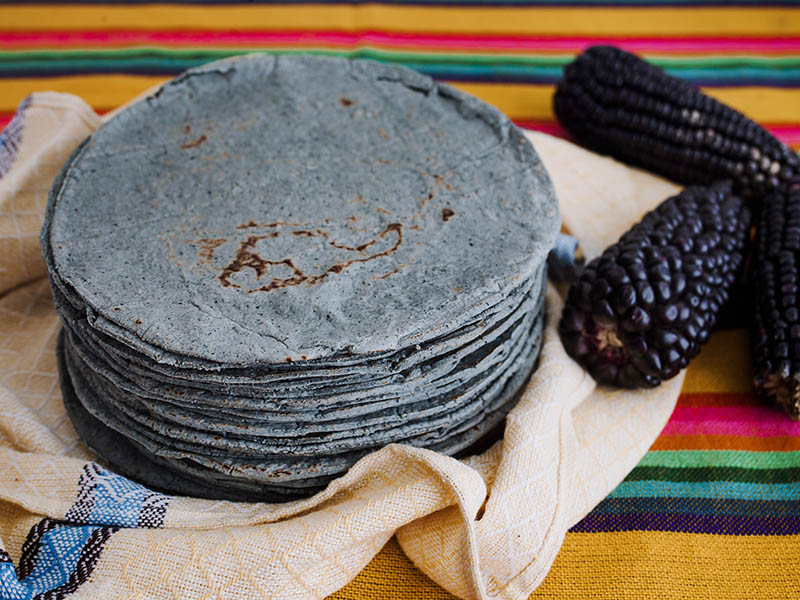
When you look at a blue corn Tortilla, its small size and smooth texture will strike you as vastly different from the yellow and white types. Even more out of place is the grayish blue color.
That hue comes from the blue corn’s anthocyanins, a naturally occurring type of dye. The substances give various fruits and plants their colors.
Anyway, the blue type of Tortilla has another key difference that you can’t observe with the naked eye. Blue corn Tortillas are more nutritious, richer in proteins and antioxidants, but less starch. As a result, they will provide you with more health benefits.
At the same time, they are also more expensive and difficult to buy. Besides only growing limitedly in parts of the United States and Mexico, blue corn comes with lower yields.
In return, blue corn flour produces a nuttier flavor for Tortillas. Its rich flavor is often enhanced with avocado oil during the process of working the dough.
Blue corn Tortillas usually have a diameter of no more than 15 centimeters. Despite the smaller size, they are as pliable as the white ones, so you can freely utilize them to create Tortilla-rolled dishes such as enchiladas and flautas.
Can you make blue corn Tortillas without a rolling pin like this lady in Mexico City?
4. Hoja Santa Tortilla
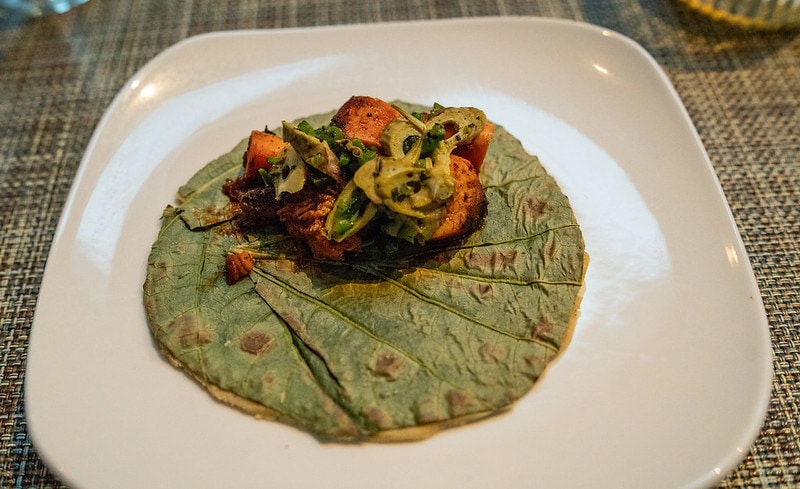
Hoja Santa Tortillas strongly resemble green leaves.
If blue corn Tortillas aren’t exotic enough for you, let’s turn to this one. Hoja santa Tortillas are a kind of Mexican corn Tortilla with a striking green color. It is a common sight in central and southern Mexico.
The main ingredient that helps it stand out from the crowd is hoja santa, a local aromatic and peppery herb. By mashing whole hoja santa leaves into the corn dough before pressing, cooks can impart an appealing appearance as well as a stimulating flavor to the Tortilla.
Due to its herbal flavor and right degree of tenderness, hoja santa Tortillas are suitable for all kinds of dishes. Enjoying its strong spicy flavor with the savory filling of meat or veggies is the ultimate bliss.
5. Nopal Tortilla
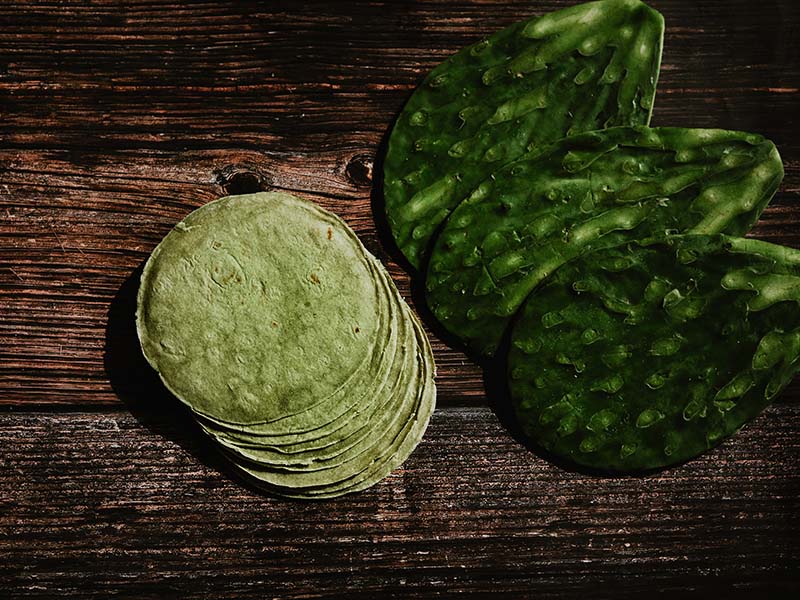
Can you add cactus flesh to your Tortillas? The answer may vary according to whom you ask, but Mexicans have long cherished nopal Tortillas made from the cactus plant. Nopal, also known as the prickly pear cactus, is an edible plant that ranks high in Mexican cuisine.
Nopal Tortillas are simply white corn- or flour-derived flatbreads whose dough is mixed with nopal juice. Other than a greenish color, they don’t differ much from ordinary Tortillas in terms of size, shape, and usage.
Not until you sink your teeth into them can you notice their uniqueness. The juice bestows a slightly sweet and sour flavor characteristic of cactus on the flatbreads. They taste like watermelons, with a note of fresh asparagus or detoxifying green beans.
6. Güirila – Young White Corn Tortilla
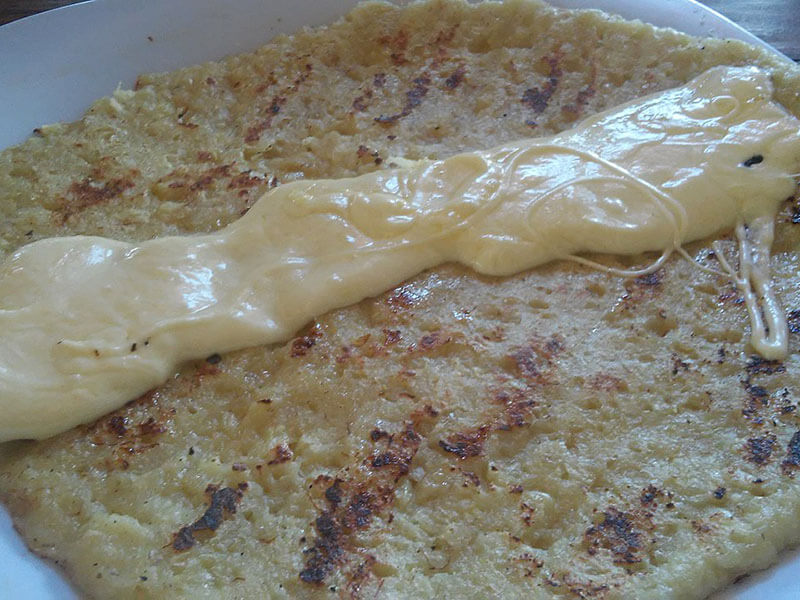
In essence, Güirila is a variation of white corn Tortillas.
Although Mexico is arguably the Tortilla capital of the world, I guarantee you can find interesting variations outside this country. For example, let’s have a taste of Güirila, from Nicaragua with love.
This is the signature dish of the largest nation in Central America. What makes its Tortilla pleasantly sweet and fresh is the choice of the main ingredient: young white corn. Street vendors usually add milk to it for even more sweetness.
In Nicaragua, Güirila is a well-liked side dish to go with meat, cream, or local cheese – Cuajada. The Nicaraguan city of Matagalpa, where the dish first appeared, once created a huge Güirila more than 200 meters in size to raise funds for charity.
7. Flour Tortilla
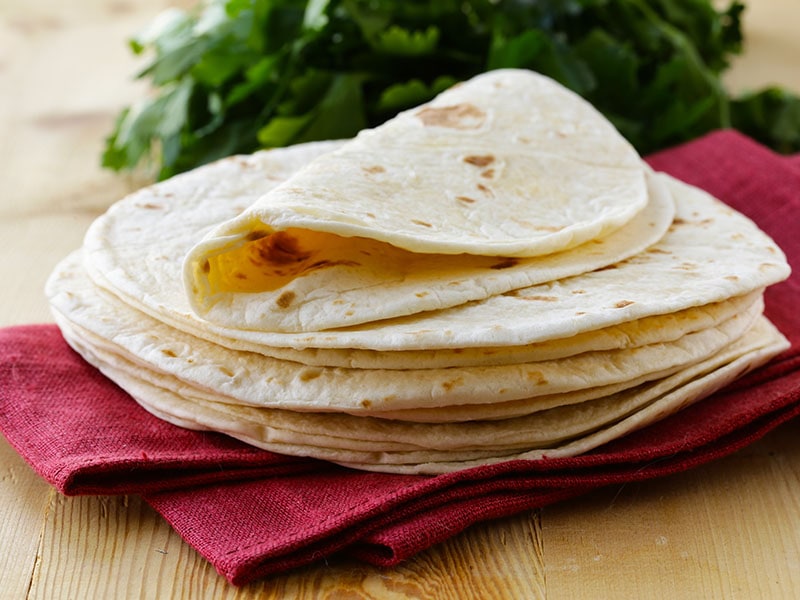
It can be tricky to determine exactly who invented this Tortilla variation. In the early 16th century, wheat was brought to the Americas by wave after wave of colonists. Apparently, someone was creative enough to substitute wheat flour for corn kernels, and the recipe came about.
How to prepare the dough for flour Tortillas is rather different from the corn-based variety. All-purpose flour is mixed with pig lard/ olive oil into a smooth dough.
Traditional flour Tortillas don’t call for baking soda because we’re talking about an unleavened flatbread. But many recipes use it anyway these days. The next step is to divide it into small balls, which are flattened and then fried in oil until golden.
Flour Tortillas are more rounded in shape and more varied in size, ranging from 18 to 30 cm. This type of flatbread is full of gluten, so it is better at holding its shape. Another concomitant characteristic is its gluten-induced mildly sweet flavor.
Thanks to the use of wheat flour, this type of Tortilla has a light, whitish color along with a soft, pliable texture. It is even better than white corn Tortillas in terms of making tacos, burritos, or quesadillas.
The sturdy, gluten-reinforced texture of flour Tortillas makes sure that the flatbread can hold a large amount of filling, such as meat and veggies. In the deep-fried form, flour Tortillas are an equally appealing snack.
The United States and northern Mexico are the best places to find flour Tortillas. However, these areas have experienced a shift towards the healthier gluten-free, corn-derived variety.
Discover how to cook flour Tortillas the easy way here.
8. Pan Arabe Tortillas
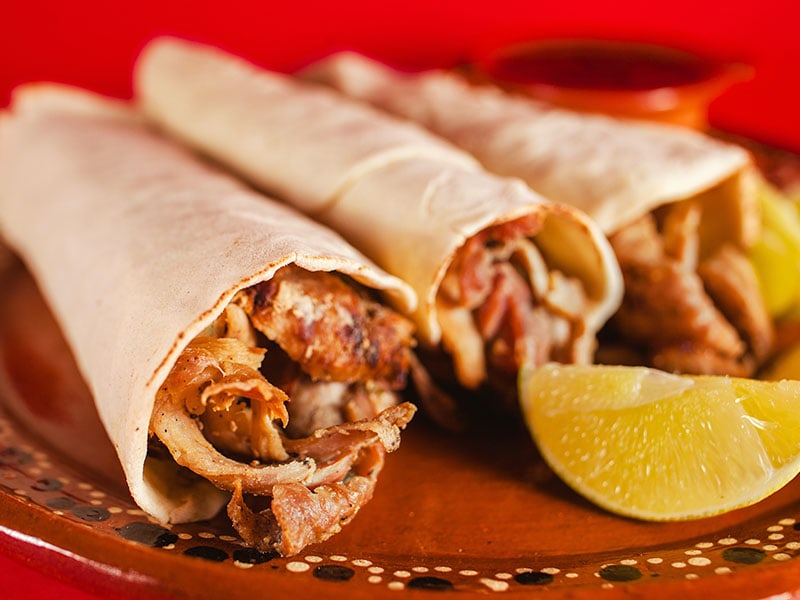
What does the fusion of Middle Eastern and Latin American cuisine taste like? It is as yummy as tacos Arabes, a meat-filled snack with nutty Tortillas as the base.
But the base doesn’t use just any variety of flatbread. You can only cook with Pan Arabe Tortillas (also known as pita bread). They are a thicker, softer, puffier, much heavier, and larger variation of flour Tortilla will allow you to enjoy the flatbread to your heart’s content.
In the turbulent years after World War I, innumerable immigrants from the Middle East arrived in the city of Pueblo (Mexico). They brought their distinct dish of roasted lamb and yogurt sauce with them. Locals incorporated that into their menu but made some changes to suit their tastes.
That’s how this yummy variety of tacos were born. They are best prepared from Pan Arabe Tortillas. The dish involves wrapping pliable flatbread, from 17 to 40 centimeters in diameter, around spicy roasted, marinated pork.
For the best experience, it is customary to dip the tacos in a sweet, tangy, and peppery chipotle salsa (Mexican sauce).
9. Beetroot Tortillas
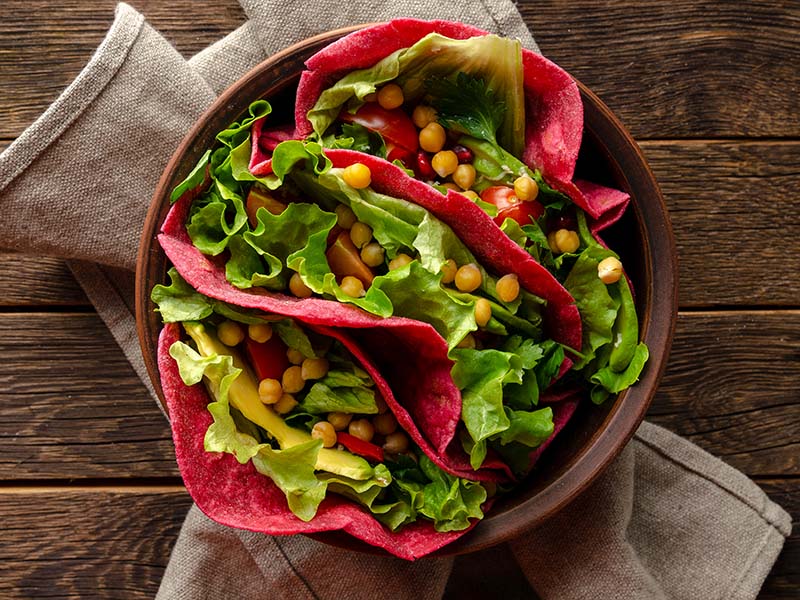
Identifying who created this recipe is impossible, so the world owes a big thank-you to that anonymous person. Beetroot Tortillas are cloaked in a stunningly alluring purple color that will turn a plain meal into a vibrant feast.
They can be made from either corn- or flour- varieties. All you need to do is to add beetroot juice to the dough before kneading. The resulting product will have the shape and size of an ordinary Tortilla, while its flavor will be much earthlier and a little bitter thanks to the juice.
This type of Tortilla is not only good-looking but also packed with health benefits. Beetroot boasts a wide array of merits, from weight control to heart health boost and cancer prevention. Adding beetroot Tortillas to your breakfast or tacos is a clever choice, health- and style-wise.
4 Things Useful To Know About Tortillas
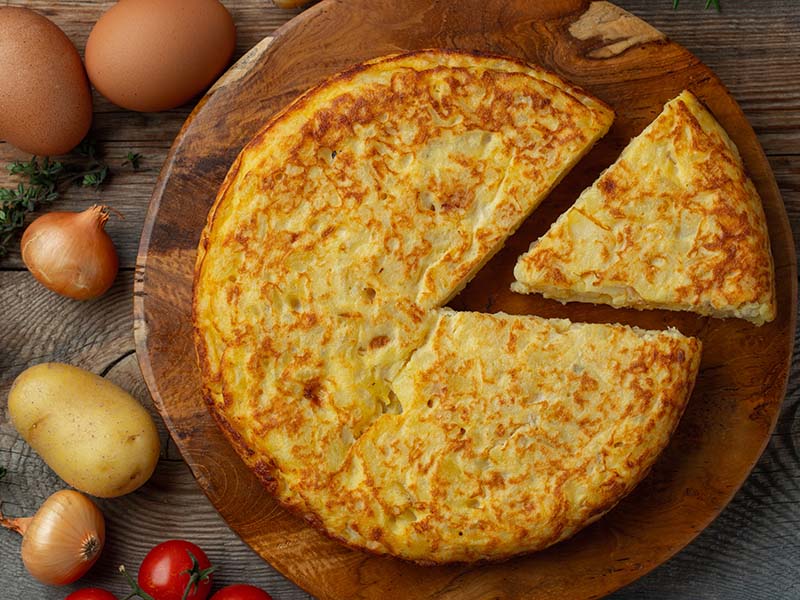
In this section, I’m going to tell you some interesting facts about Tortillas that will help you preserve and enjoy this food better.
Throw Away Moldy Tortillas
If you’re wondering whether Tortillas will spoil, take a look at the package. All commercial Tortillas come with an expiration date: 1 to 8 weeks (if refrigerated). Meanwhile, homemade Tortillas can only last 2-3 days.
When your flatbreads are past that mark, they will stiffen, develop molds, and finally become inedible. After the Tortillas get stiff, they will lose their flavor, but you can still salvage the situation by cooking and consuming them quickly.
However, it’s all over if molds or spots of different colors or molds appear on the flatbreads. You should discard the lot right away.
Spanish Tortillas Aren’t Tortillas
You may find the name confusing, so I would like to emphasize that it’s not a flatbread at all but rather a traditional potato-based omelet in Spain. The problem stems from the fact that while “Tortilla” refers to the Mesoamerican flatbread, it also means “omelet” in Spanish.
A Tortilla Press Can Be A Good Investment
While Tortilla masters can create perfectly-shaped disks with their bare hands or a rolling pin, you should think about buying a Tortilla press. It will come in very handy if you plan to prepare Tortillas regularly or in large quantities.
Cast iron is the most popular material for optimal Tortilla presses, but steel and aluminum Tortilla makers can serve your needs admirably. If you don’t want to get your hands dirty, electric Tortilla presses are an interesting choice.
Freezing Tortillas Is Advisable
Stashing Tortillas in the refrigerator is a standard procedure. But is it advisable to store Tortillas in the freezer? The answer is a big yes. If you freeze your Tortillas, their shelf life will dramatically increase to between 6 and 8 months.
But don’t forget to defrost your frozen flatbreads correctly. When you’re hungry for sweetish, chewy Tortillas, get them out of the freezer and leave them to sit in the refrigerator overnight (ideally) before cooking with a pan or microwave.
4 Amazing Tortilla Recipes To Try Your Hand At
The general function of Tortillas is to serve as a side dish with grilled meat, soups, stews, salads, etc. But do you know that there are plenty of ideas to turn this plain unleavened flatbread into a great treat? Check them out here.
Burrito
A staple of Mexican and Texanian cuisine, Burrito is a delectable choice to jumpstart a riveting Mexican-style party. All you need to do is to wrap a Tortilla into a sealed cylindrical shape around a savory filling of rice, cheese, ground meat, etc.
The recipe calls for an extremely pliable flatbread, so the flour-based variety is usually the preferred choice. If you want your burritos to stand out from the crowd, you can try the green hoja santa- or purple beetroot-added versions.
Taco
Is there anything as evocative of Mexican desserts as this one? You don’t have to be a Mexican to realize the universal appeal of this hand-sized filling-topped Tortilla. It is an amazing snack worth throwing away knives and forks for.
Discover how easy it is to prepare tacos at home with this tutorial.
Taquito
French fries, cheese, or toast are a few excellent side dishes to pair with guacamole. But do you know what works best at complementing the tangy taste of this avocado-based sauce? Taquito.
Also known as “Flauta” (Spanish for “flute”), this delight consists of beef- or chicken-filled corn Tortillas that are deep-fried in oil. A combo of sour cream-topped Taquitos and premier guacamole is a spectacular snack not to be taken lightly.
Quesadilla
Many mouth-watering Mexican street foods are extremely flexible in terms of ingredients, and quesadilla is no exception. Whether you like meat or fruit, sweet or spicy, quesadilla will perform admirably to your liking.
Add Tortillas To Your Menu, Why Not?
The unleavened flatbread is a beauty of Latin American cuisine, especially Mexican one. It combines everything you desire to find in good food, from taste to nutritional value and versatility in culinary use.
So why don’t you replace run-of-the-mill starch, such as normal bread, with Tortillas? The change will considerably reinvigorate your interest in daily meals. Don’t forget to make your purchase with the information you have learned in this post.
Speaking of which, please share this article with other people if you like it. Any thought or opinion you leave in the comment section will be greatly welcome. Bon appetit and see you soon!
